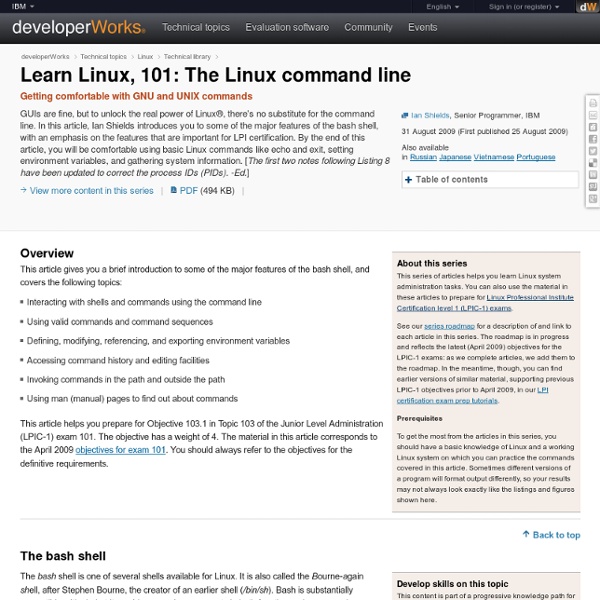Linux Directory Structure (File System Structure) Explained with Examples
by Ramesh Natarajan on September 8, 2010 Have you wondered why certain programs are located under /bin, or /sbin, or /usr/bin, or /usr/sbin? For example, less command is located under /usr/bin directory. Why not /bin, or /sbin, or /usr/sbin?
Empfehlenswerte Linux-Distributionen für Server - RHEL, openSUSE, SLES, Ubuntu & Co.
Linux als Serversystem ist schon lang kein Exot mehr. Die Frage ist nur, auf welche Distribution man setzen soll. So einfach lässt sich das leider nicht beantworten.
Cool, but obscure unix tools
Just a list of 20 (now 28) tools for the command line. Some are little-known, some are just too useful to miss, some are pure obscure -- I hope you find something useful that you weren't aware of yet! Use your operating system's package manager to install most of them. (Thanks for the tips, everybody!) dstat & sar iostat, vmstat, ifstat and much more in one.
An A-Z Index of the Bash command line for Linux
Commands marked • are bash built-ins Many commands particularly the Core Utils are also available under alternate shells (C shell, Korn shell etc). More bash commands: Linux Command Directory from O'Reilly, GNU CoreUtils.SS64 bash discussion forumLinks to other Sites, books etc
Pinguy OS
LXDE
LXDE ist eine freie Desktop-Umgebung für Unix und andere POSIX-konforme Plattformen, wie Linux oder BSD. Der Name LXDE steht für „Lightweight X11 Desktop Environment“ und „LX“ steht gleichzeitig für Linux. Das Projekt wurde im Jahr 2006 begonnen,[2] um eine Arbeitsumgebung zu schaffen, welche schnell und energiesparend arbeitet.[3] Sie eignet sich daher gut für den Einsatz auf Netbooks oder auf älteren PCs, bei denen die heute üblichen Leistungsanforderungen nicht aufgebracht werden können.
Shell Programming!
A working knowledge of shell scripting is essential to anyone wishing to become reasonably proficient at system administration, even if they do not anticipate ever having to actually write a script. Consider that as a Linux machine boots up, it executes the shell scripts in /etc/rc.d to restore the system configuration and set up services. A detailed understanding of these startup scripts is important for analyzing the behavior of a system, and possibly modifying it. The craft of scripting is not hard to master, since scripts can be built in bite-sized sections and there is only a fairly small set of shell-specific operators and options to learn. The syntax is simple -- even austere -- similar to that of invoking and chaining together utilities at the command line, and there are only a few "rules" governing their use.
Xfce
Xfce (englische Aussprache: [ɛks ɛf siː iː][1]; ugs. oft auch „X-Face“ als „Gesicht für X“) ist eine modular aufgebaute freie Desktop-Umgebung für Unix und unixartige Betriebssysteme. Sie ist als freie Software unter GPL, LGPL und 2-Klausel-BSD-Lizenz veröffentlicht. Details[Bearbeiten] Geschichte[Bearbeiten] Mit der 1997 erschienenen Version 2.0 wurde erstmals der eigens für Xfce entwickelte Fenstermanager xfwm mitgeliefert.
OpenSSH



